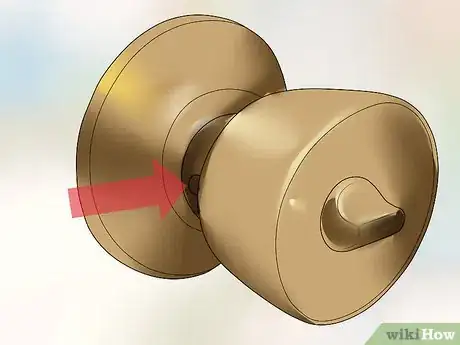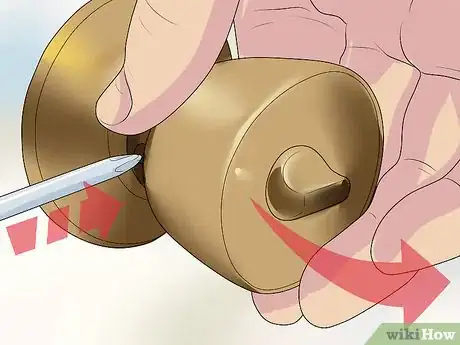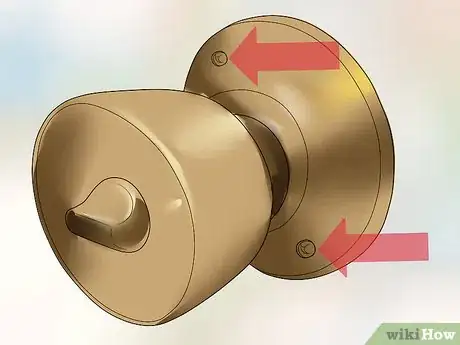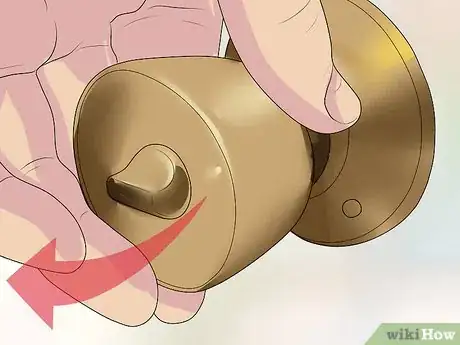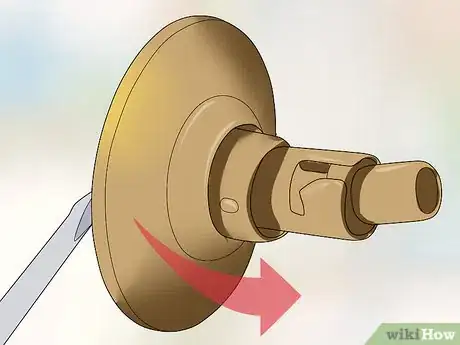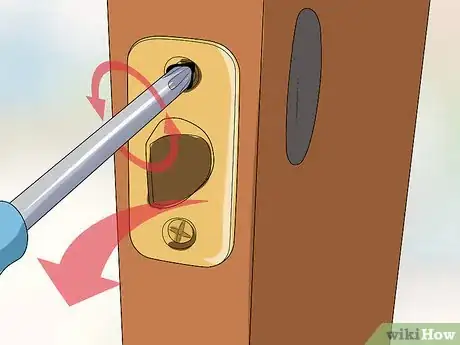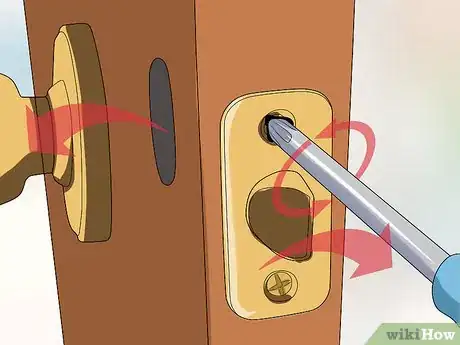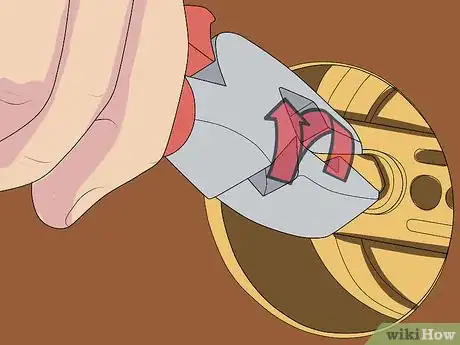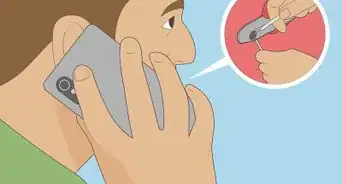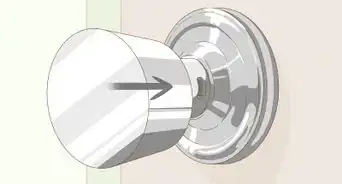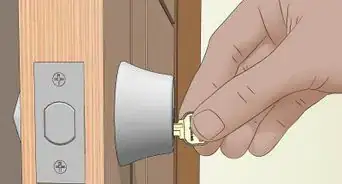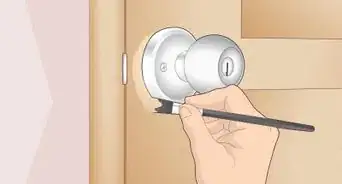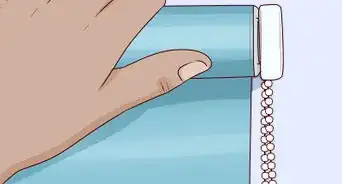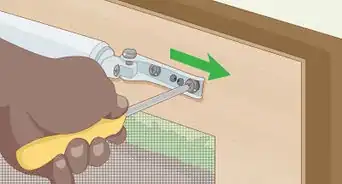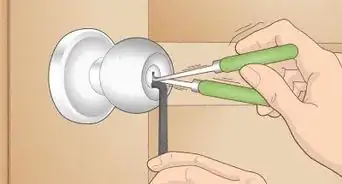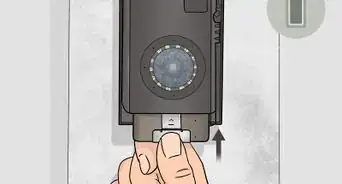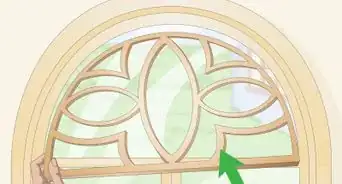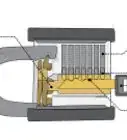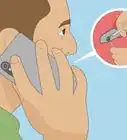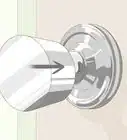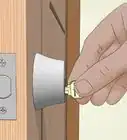This article was co-authored by wikiHow Staff. Our trained team of editors and researchers validate articles for accuracy and comprehensiveness. wikiHow's Content Management Team carefully monitors the work from our editorial staff to ensure that each article is backed by trusted research and meets our high quality standards.
There are 8 references cited in this article, which can be found at the bottom of the page.
This article has been viewed 197,057 times.
Learn more...
A knobset lock, or a lock that has a doorknob attached to it, are commonly found in residential homes all across the world. There might be a time where you need to replace a doorknob because it was damaged or because you've lost the key. Removing a knobset lock is straightforward and simple as long as you follow the proper steps. By understanding the construction of the lock and by using the right tools, you can remove a knobset lock whether it has hidden or exposed screws, and can even remove a lock if it's become jammed or broken.
Steps
Removing a Doorknob With Hidden Levers
-
1Examine the base of your knob to determine what kind it is. There are two main types of doorknobs with hidden levers. These hidden levers can be in the form of a thin slot or a pinhole. Determine which kind of knob you have, because each knob will detach from the door differently.[1]
- These hidden levers are also called detents.[2]
-
2Use a tool to press down on the secret latch. You'll have to apply pressure to the detent at the base of your doorknob. If your doorknob has a thin slot at the base of it, you need to use a flathead screwdriver to press down on the hidden latch inside of it. If there is a pin hole at the base of your knob, you'll need to use a thin object like a pin or paper clip to disengage it. [3]Advertisement
-
3Pull and twist on the knob until it comes loose. With the hidden lever still pushed, pull on the doorknob. It should come loose. If you're having problems removing the knob from the latch, you may have to twist it or wiggle it back and forth. You should be able to remove both knobs from each side of the door.[4]
Removing a Doorknob with Exposed Screws
-
1Find the screws on the sides of the door handle. Locate all of the screws on both sides of your door handle. Most screws in knobset locks use Phillips head screws. Examine the screws to determine which kind of screwdriver you need in order to unscrew them.[5]
-
2Remove the screws on both sides of the lock. Use a screwdriver to unscrew the exposed screws at the base of the knob. Typically, you'll have to turn the screws counter-clockwise to loosen them.
- If your doorknob has recessed screws, you may need an Allen wrench to remove them.
-
3Pull out both of the doorknobs. After you've unscrewed both screws on each side of the knobset lock, the doorknobs will be loose enough to come out. Simply pull on them to disengage them from the rest of the lock.[6]
- If they are stuck, you may need to wiggle them.
Removing the Rest of the Lock
-
1Lift and remove the doorknob's faceplate. After you remove both knobs, you'll be able to remove the faceplates that were attached to the knobs. Wedge a flathead screwdriver under the bottom of the faceplate and pry it off. Once it's loose, you'll be able to remove it with your hand.[7]
-
2Remove the screws in the knob with a screwdriver. When you remove the faceplate, it will reveal the inside of your knobset lock. There should be a series of screws that connect that portion of the lock to your door. Once you remove the screws, the lock should become loose and you can pull both sides of the lock out of the door.[8]
-
3Remove the latch from the door. The last thing that should remain from the knobset lock is the latch. The latch is the part of the lock that fits into the doorframe. Sometimes the latch will just come loose once you remove the other parts of the lock, and sometimes you'll have to unscrew two screws on the top and bottom to disengage it from the door. Pull the latch from the door and you'll have entirely removed a knobset lock.
Removing a Broken and Locked Knobset Lock
-
1Remove the doorknob and faceplate from your side of the door. Remove the doorknob from the door by either engaging the hidden latch near the base of the doorknob or by unscrewing it. Once the knob is removed, you'll have to use a flathead screwdriver or other object to pry the faceplate from the door. This should reveal the interior door lever on the door.
-
2Grab onto the door lever with a pair of pliers. There will be a small lever that pokes out of the hole in your lock. Grab onto this lever with a pair of pliers and twist your pliers clockwise to disengage the lock. You should feel resistance as you turn the pliers.[9]
-
3Twist the middle shaft with the pliers. Use the pliers to grab onto the shaft that houses the door lever. Turning this part clockwise will pull the plunger in and allow you to open your door. Once your door is open and unlocked, you can resume in removing the rest of the lock.
Community Q&A
-
QuestionMy bathroom door has no screws, no hole and its locked. How do we get it open?
 Community AnswerTake off the entire door. If you don't have screws for this door, it is unsafe.
Community AnswerTake off the entire door. If you don't have screws for this door, it is unsafe. -
QuestionI removed the knob, but don't see any screws.
 Community AnswerThe faceplate covers the screws that are underneath. Make sure that you remove the faceplate before moving on.
Community AnswerThe faceplate covers the screws that are underneath. Make sure that you remove the faceplate before moving on. -
QuestionHow do I disable a door lock that requires you to push the whole knob itself and twist to lock? My daughter has recently locked herself in our bedroom playing around with it.Locks on passage sets like that typically have a "release" mechanism that is accessed through a small hole on the outside knob or next to the knob. Find the hole, insert a sharp object and press the release until the inside knob pops open. To disable the mechanism, either remove the locking lever or replace it with a knobset that doesn't lock.
References
- ↑ https://www.bobvila.com/articles/how-to-remove-a-doorknob/#.WOVI-fkrLcd
- ↑ http://www.factsfacts.com/MyHomeRepair/doorknobs.htm
- ↑ https://www.thisoldhouse.com/more/removing-interior-doorknob
- ↑ https://www.youtube.com/watch?v=7MZf4awTo6s
- ↑ https://www.ifixit.com/Guide/How+to+Change+an+Indoor+Doorknob+Handle/39987
- ↑ https://www.ifixit.com/Guide/How+to+Change+an+Indoor+Doorknob+Handle/39987
- ↑ http://www.ebay.com/gds/How-to-Remove-a-Weslock-Door-Knob-/10000000208087156/g.html
- ↑ https://www.realsimple.com/home-organizing/home-improvement/do-it-yourself-save-big/replace-doorknob-hidden-screws
- ↑ https://www.youtube.com/watch?v=80yxzWbDmU4
